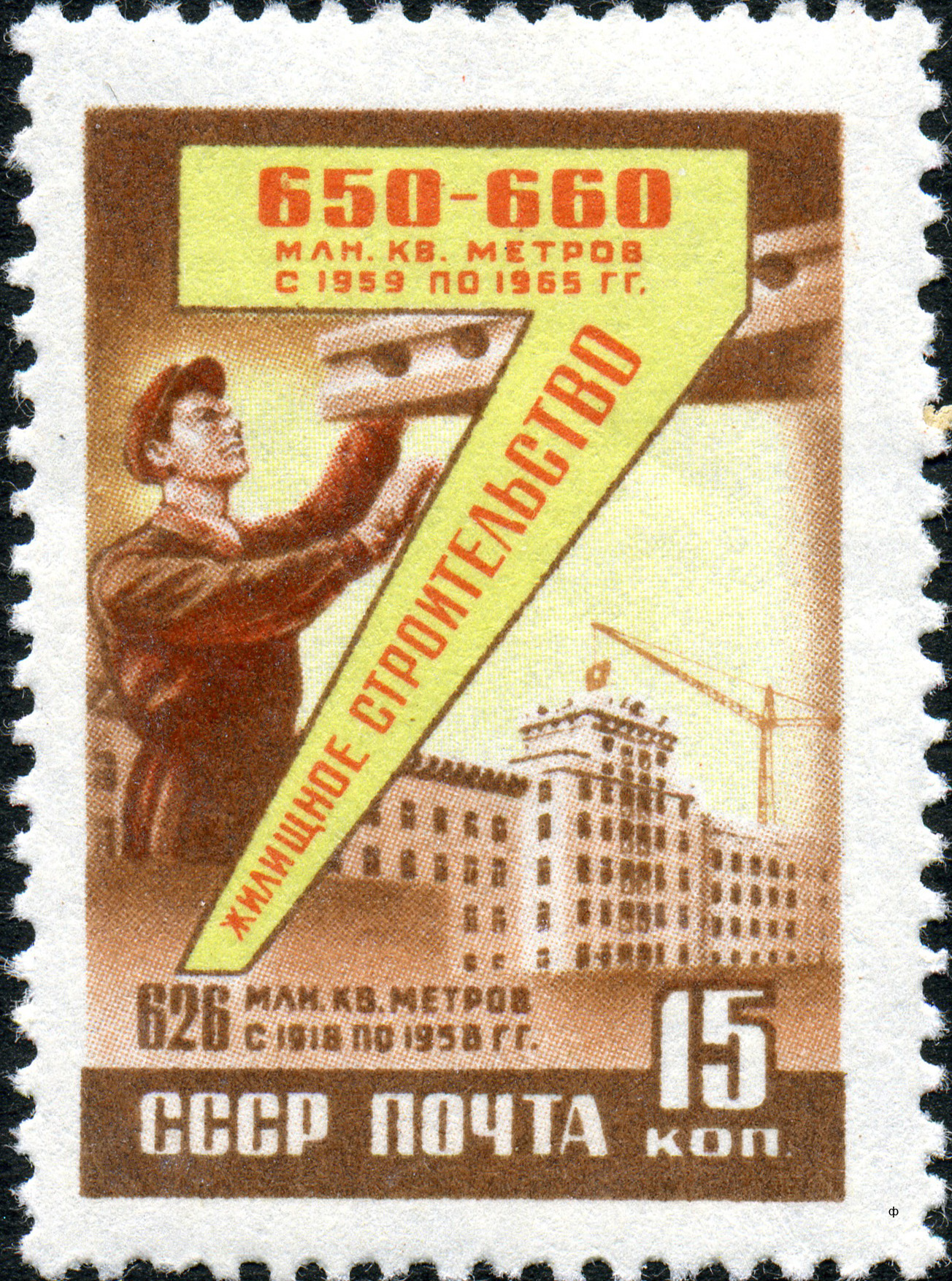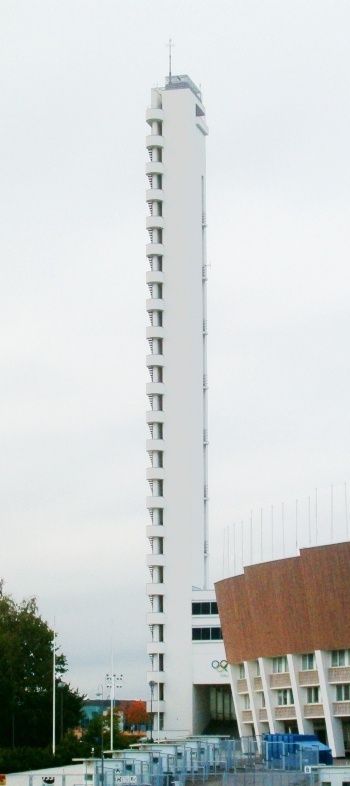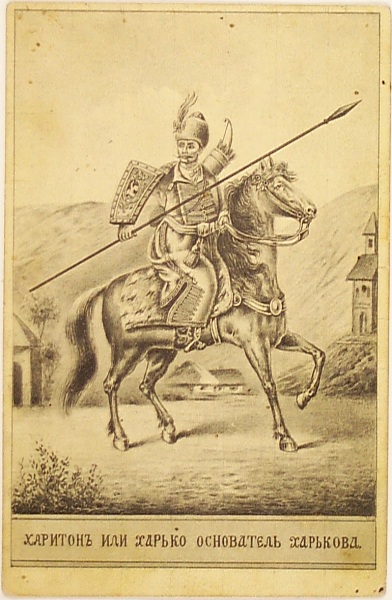|
Khrushchyovka
''Khrushchevkas'' ( rus, хрущёвка, khrushchyovka, p=xrʊˈɕːɵfkə) are a type of low-cost, concrete- paneled or brick three- to five-storied apartment buildings (and apartments in these buildings) which were designed and constructed in the Soviet Union since the early 1960s (when their namesake, Nikita Khrushchev, was leader of the Soviet Union). With the beginning of the construction of "Khrushchyovkas," Soviet housing development became predominantly industrial. Compared to " Stalinkas", which were usually built from brick, Khrushchyovkas had smaller apartments, and their functionalist-style architecture was extremely simple. However, the first-generation buildings surpassed the typical two-story wooden apartment buildings of the Stalin era in many ways and significantly alleviated the acute housing shortage. These buildings were constructed from 1956 to the mid-1970s. In the late 1960s, "Brezhnevkas" began to replace Khrushchyovkas, but both remain among the mos ... [...More Info...] [...Related Items...] OR: [Wikipedia] [Google] [Baidu] |
Stalinka
Stalinka, Stalinist apartment buildings or Stalin era, Stalin-era buildings, are a common colloquial term for apartment buildings constructed in the USSR from 1933 in the Soviet Union, 1933 to 1961 in the Soviet Union, 1961, primarily during the rule of Joseph Stalin. They were predominantly built in the neoclassical style (Stalinist Empire style, Stalinist Empire). Stalinkas are solidly constructed multi-apartment buildings with full utilities, featuring non-combustible materials and typically at least two stories high. The term ''Stalinka'' does not include other types of residential buildings from Stalin's era, such as barracks, brick houses without utilities, or single-story individual or semi-detached houses. ''Stalinkas'' were well-built, spacious, and prestigious. Typically located on central streets, primarily constructed for Soviet elites - party members, Soviet workers, intelligentsia, academics, military authorities, writers and actors from 1933 to 1961. Made of red bri ... [...More Info...] [...Related Items...] OR: [Wikipedia] [Google] [Baidu] |
Functionalism (architecture)
In architecture, functionalism is the principle that buildings should be designed based solely on their purpose and function. An international functionalist architecture movement emerged in the wake of World War I, as part of the wave of Modernism. Its ideas were largely inspired by a desire to build a new and better world for the people, as broadly and strongly expressed by the social and political movements of Europe after the extremely devastating world war. In this respect, functionalist architecture is often linked with the ideas of socialism and modern humanism. A new slight addition to this new wave of architecture was that not only should buildings and houses be designed around the purpose of functionality, architecture should also be used as a means to physically create a better world and a better life for people in the broadest sense. This new functionalist architecture had the strongest impact in Czechoslovakia, Germany, Poland, the USSR and the Netherlands, and from th ... [...More Info...] [...Related Items...] OR: [Wikipedia] [Google] [Baidu] |
Social Housing
Public housing, also known as social housing, refers to Subsidized housing, subsidized or affordable housing provided in buildings that are usually owned and managed by local government, central government, nonprofit organizations or a combination thereof. The details, terminology, definitions of poverty, and other criteria for allocation may vary within different contexts, but the right to renting, rent such a home is generally rationed through some form of means-testing or through administrative measures of housing needs. One can regard social housing as a potential remedy for housing inequality. Within the OECD, social housing represents an average of 7% of national housing stock (2020), ranging from ~34% in the Netherlands to less than 1% in Colombia. In the United States, public housing developments are classified as housing projects that are owned by a housing authority or a low-income (project-based voucher) property. PBV are a component of a public housing agenc ... [...More Info...] [...Related Items...] OR: [Wikipedia] [Google] [Baidu] |
Gatchina
Gatchina (, ) is a town and the administrative center of Gatchinsky District in Leningrad Oblast, Russia. It lies south-south-west of St. Petersburg, along the E95 highway which links Saint Petersburg and Pskov. Population: It was previously known as ''Khotchino'', ''Gatchina'' (until February 14, 1923), ''Trotsk'' (until August 2, 1929), and ''Krasnogvardeysk'' (until January 28, 1944). Gatchina, the largest town in Leningrad Oblast, is best known as the location of the Great Gatchina Palace, one of the main residences of the Russian Imperial Family during the 18th and 19th centuries. The historic center and Gatchina Palace are part of the UNESCO World Heritage Site's "Historic Centre of Saint Petersburg and Related Groups of Monuments". Another popular tourist attraction in Gatchina is the Prioratsky Palace. Gatchina has placed highly in quality-of-life rankings in Russia. History Early history Gatchina was first documented in 1499 under the na ... [...More Info...] [...Related Items...] OR: [Wikipedia] [Google] [Baidu] |
Communist Party Of Ukraine (Soviet Union)
The Communist Party of Ukraine (, КПУ, ''KPU''; ) was the founding and ruling political party of the Ukrainian SSR operated as a republican branch ( union republics) of the Communist Party of the Soviet Union (CPSU).Pyrih, R. Communist Party of Ukraine, the Soviet period (КОМУНІСТИЧНА ПАРТІЯ УКРАЇНИ РАДЯНСЬКОЇ ДОБИ)'. Encyclopedia of History of Ukraine. 2007 Founded as the Communist Party (Bolsheviks) of Ukraine (CP(b)U) in 1918 in Moscow, Russian SFSR, it was the sole governing party in Ukraine during its time in Soviet Russia and the Soviet Union. While the anti-Bolshevik Ukrainian People's Republic had its own political parties of socialist ideologies, the Communist Party of Ukraine was created out of the party of Russian Bolsheviks in Ukraine known as the RSDRP(b) – Social-Democracy of Ukraine. The party was denied the right to have a separate party statute and was governed by the statute of the Russian Communist Party (Bolshev ... [...More Info...] [...Related Items...] OR: [Wikipedia] [Google] [Baidu] |
Mikhail Posokhin
Mikhail Vasilyevich Posokhin (; 30 November 1910 - 22 January 1989) was a Soviet, Russian architect and teacher. People's Architect of the USSR (1970). Laureate of the Lenin Prize (1962), State Prize of the USSR (1980) and Stalin Prize of the second degree (1949). He is mostly known for being Chief Architect of Moscow (1960–1980). Among his main completed projects are a high-rise residential building on Kudrinskaya Square and the development of New Arbat Avenue in Moscow. He served as a member of the Union of Architects of the USSR. Full member of the USSR Academy of Arts (1979), member of the Presidium, academician-secretary of the Department of Architecture and Monumental Art of the USSR Academy of Arts (1979). Corresponding member of the USSR Academy of Architecture (1950–1955), Academy of Construction and Architecture (1956–1963). Biography Early life Born on November 30 (December 13), 1910 in Tomsk. His parents, Vasily Mikhailovich and Maria Alexandrovna, belonged to t ... [...More Info...] [...Related Items...] OR: [Wikipedia] [Google] [Baidu] |
Beryozovsky, Sverdlovsk Oblast
Beryozovsky () is a town in Sverdlovsk Oblast, Russia, located on the Beryozovka River ( Pyshma's tributary), northeast of Yekaterinburg, the administrative center of the oblast. Population: History It was founded in 1752 as a gold-mining settlement by the Beryozovskoye deposit. Town status was granted to it in 1938. Administrative and municipal status Within the framework of the administrative divisions, it is, together with seventeen rural localities, incorporated as the Town of BeryozovskyOrder #120-P—an administrative unit with the status equal to that of the districts A district is a type of administrative division that in some countries is managed by the local government. Across the world, areas known as "districts" vary greatly in size, spanning regions or counties, several municipalities, subdivisions ....Law #30-OZ As a municipal division, the Town of Beryozovsky is incorporated as Beryozovsky Urban Okrug.Law #85-OZ Its small population is led by its m ... [...More Info...] [...Related Items...] OR: [Wikipedia] [Google] [Baidu] |
Yekaterinburg
Yekaterinburg (, ; ), alternatively Romanization of Russian, romanized as Ekaterinburg and formerly known as Sverdlovsk ( ; 1924–1991), is a city and the administrative centre of Sverdlovsk Oblast and the Ural Federal District, Russia. The city is located on the Iset River between the Idel-Ural, Volga-Ural region and Siberia, with a population of roughly 1.5 million residents, up to 2.2 million residents in the urban agglomeration. Yekaterinburg is the list of cities and towns in Russia by population, fourth-largest city in Russia, the largest city in the Ural Federal District, and one of Russia's main cultural and industrial centres. Yekaterinburg has been dubbed the "Third capital of Russia", as it is ranked third by the size of its economy, culture, transportation and tourism. Yekaterinburg was founded on 18 November 1723 and named after the Orthodox name of Catherine I of Russia, Catherine I (born Marta Helena Skowrońska), the wife of Russian Emperor Peter the G ... [...More Info...] [...Related Items...] OR: [Wikipedia] [Google] [Baidu] |
Uralmashzavod
Uralmash is a heavy machine production business of the Russian engineering corporation OMZ. Its facility is located in Yekaterinburg, Russia, and it is reported to employ around 16,500 people. The surrounding residential area where workers live is also called Uralmash. Uralmash () is an abbreviation of , ''Ural’s’kiy Mashinostroitelnyy Zavod,'' literally ‘Urals Machine-Building Plant.' Historically, the plant was also called , ''Ural’s’kiy Zavod Tyazhelogo Mashinostroyeniya,'' ‘Ural Heavy Machinery Plant’ or , ''UZTM,'' and for a time carried the honorary name of Ordzhonikidze Ural Heavy Machinery Plant, after Grigoriy Ordzhonikidze. History The construction of the Ural Heavy Machinery Plant began in 1926, and in 1928 a special "" for its workers was also elected. The plant began operations in 1933 in compliance with the plans of the Government of the USSR for the industrialization of the country. During the pre-World War II period, Uralmash was dependent on ... [...More Info...] [...Related Items...] OR: [Wikipedia] [Google] [Baidu] |
Kharkiv
Kharkiv, also known as Kharkov, is the second-largest List of cities in Ukraine, city in Ukraine.Kharkiv "never had eastern-western conflicts" , ''Euronews'' (23 October 2014) Located in the northeast of the country, it is the largest city of the historic region of Sloboda Ukraine. Kharkiv is the administrative centre of Kharkiv Oblast and Kharkiv Raion. Prior to the Russian invasion of Ukraine in early 2022, it had an estimated population of 1,421,125. Founded in 1654 as a Cossacks, Cossack fortress, by late 19th century Kharkiv had developed within the Russian Empire as a major commercial and industrial centre. From December 1919 to January 1934, Kharkiv was the capital of the Ukrainian Soviet Socialist Rep ... [...More Info...] [...Related Items...] OR: [Wikipedia] [Google] [Baidu] |







